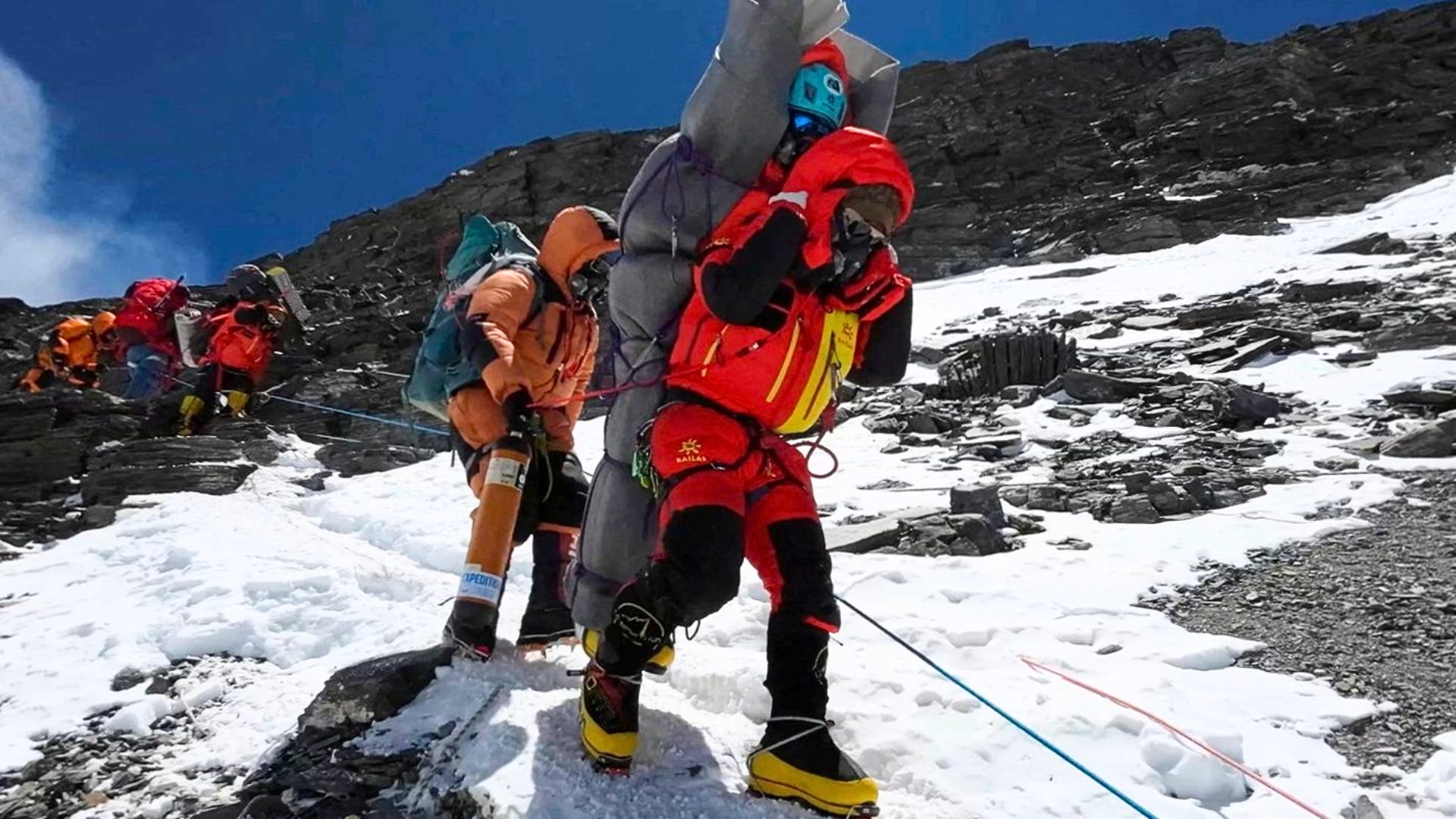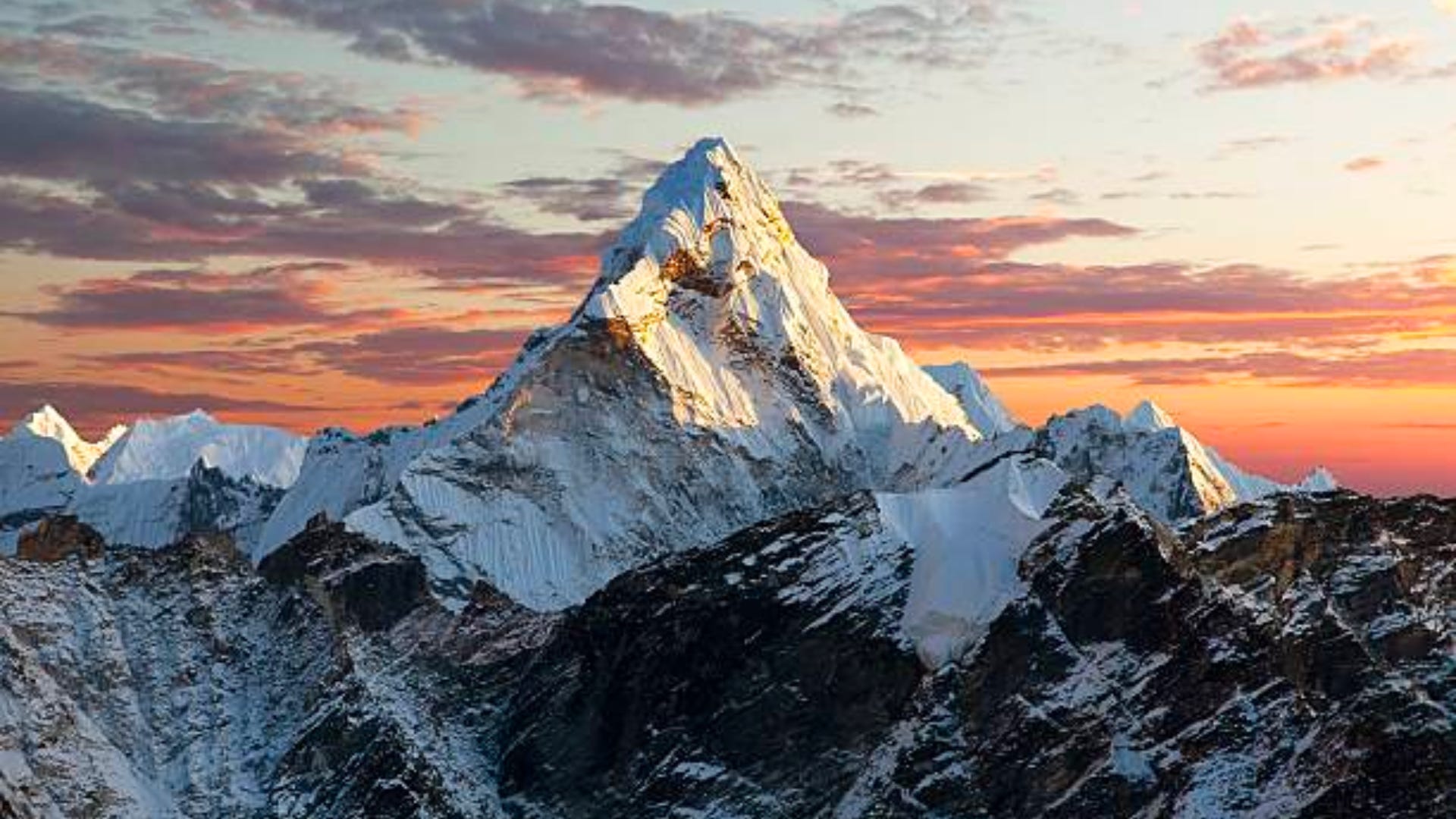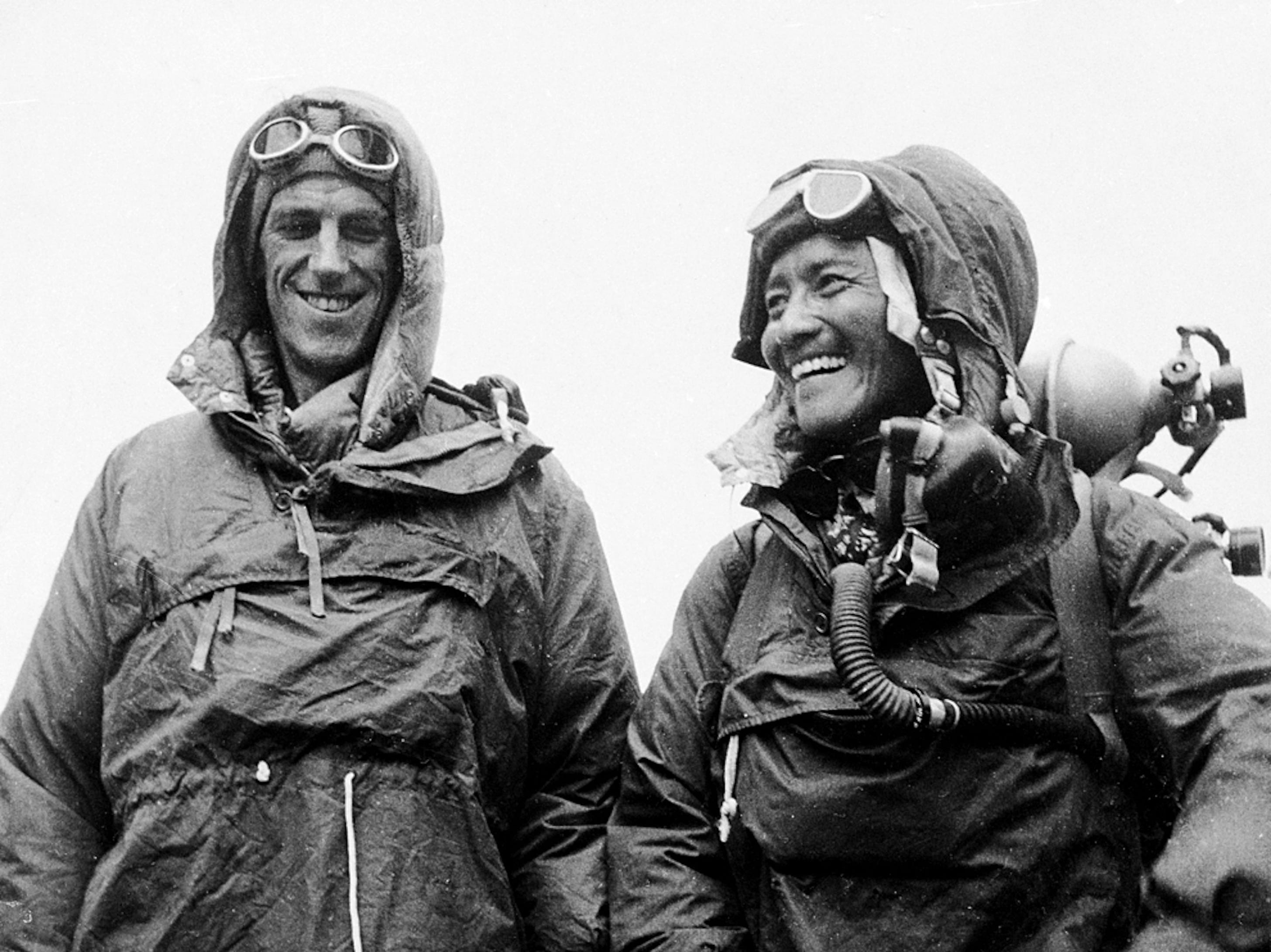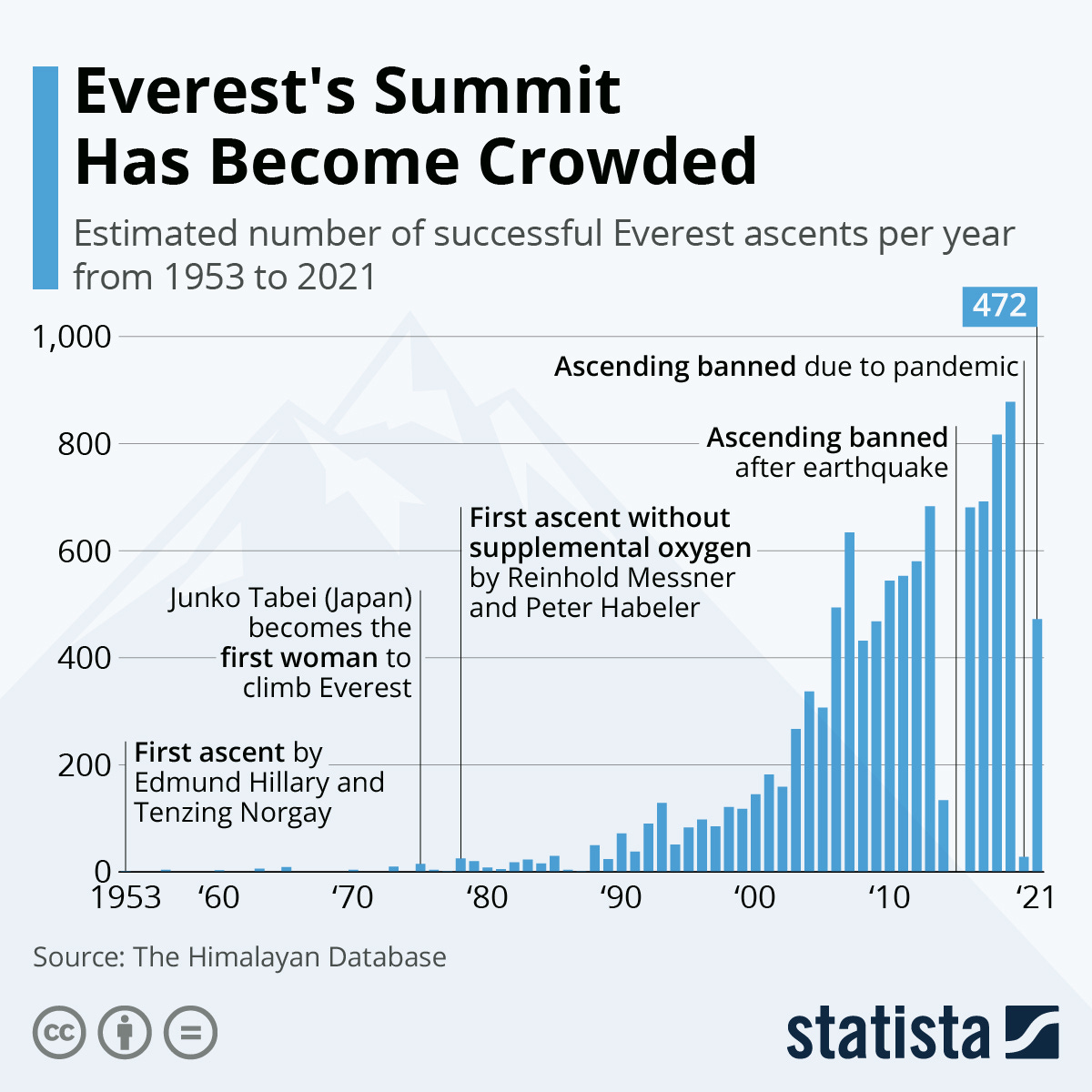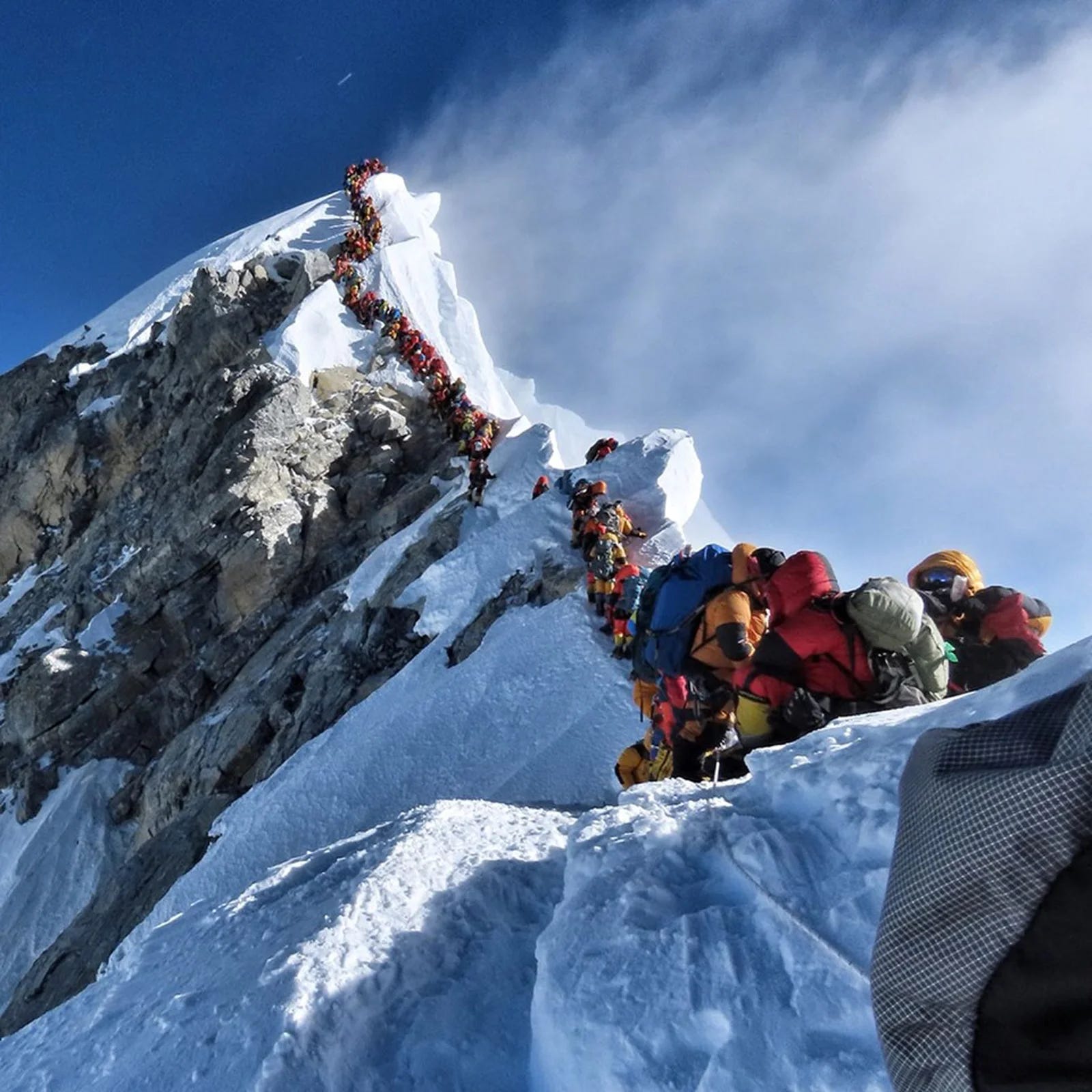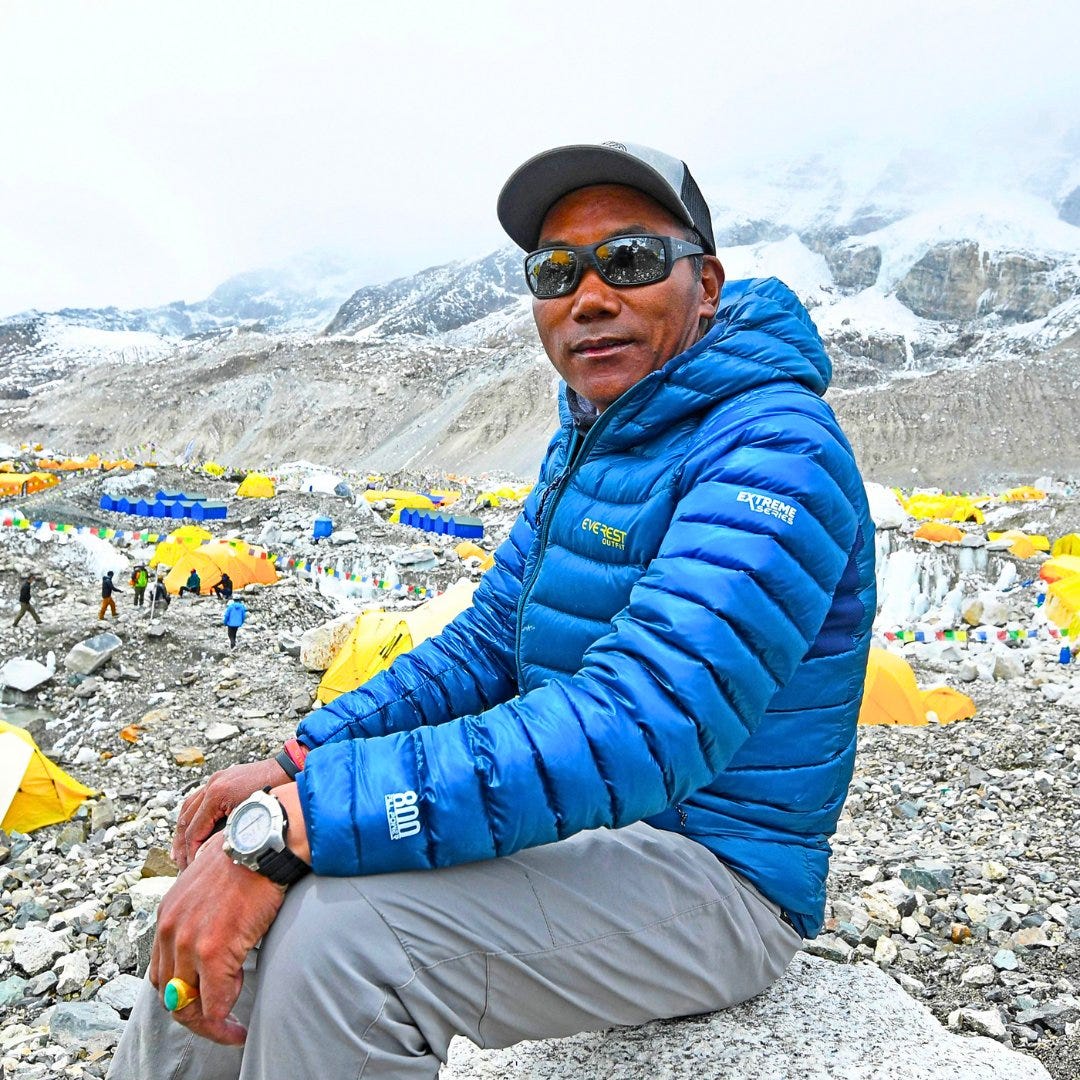How Mount Everest Became A Huge (And Dangerous) Business
Huddle Up is a 3x weekly newsletter that breaks down the business and money behind sports. If you are not already a subscriber, sign up and join 100,000+ others who receive it directly in their inbox each week. Today At A Glance:Mount Everest is the world’s tallest mountain — and has become a huge business. So today’s newsletter breaks down everything you need to know, including why the mountain has become so popular, the crazy amount of money each person spends on the trip, how much the Sherpas are getting paid, and why the mountain has become a $100 million-plus cash cow for the local government. This newsletter is also available via podcast on Apple or Spotify. Enjoy! This Newsletter is Sponsored By Kion!I started taking Kion Amino Acids several months ago, and it’s been a complete game-changer. I’m less tired — and my workouts are more productive than ever before. Kion Aminos is the fundamental supplement for fitness because it helps build lean muscle, repair tissues, boost energy, and enhance athletic recovery. Their flavors taste great — Mixed Berry, Watermelon, Mango, and Cool Lime — and it’s the single most effective way to guarantee your body is receiving all 9 of the essential amino acids that it needs. So check out Kion below and save 20% on monthly deliveries (or 10% on one-time purchases.) Friends, Last month, a Nepali sherpa named Gelje was guiding a Chinese client up Mount Everest when he spotted another climber in danger. This Malaysian climber was pushing for the summit at 8,300 meters — roughly the cruising altitude of a large commercial airplane — and was left for dead by others in negative 2-degree (°F) weather. So Gelje ran over to the climber, wrapped him in a thermal blanket, gave him an oxygen tank, put him on his back, and hiked him 6 hours down the mountain to safety. Gelje had to cancel his private summit with his Chinese client when they were just 500 meters from the summit — a trip that probably cost the client $100,000. But Gelje saved the Malaysian climber’s life, and he has since been released from the hospital.
Gelje’s decision (and action) to save the man’s life is undoubtedly noble. But it also displays the sobering reality of what the world’s tallest mountain has become. Nearly 1,000 people will attempt to summit Mount Everest this year. These climbers — whether qualified or unqualified— will purchase flights, accommodations, permits, gear, and expert-level Sherpa guidance, typically spending upward of $50,000 each trip. This makes Mount Everest a vital part of the Nepali economy. Sherpas — local experts of the mountainous terrain — earn between $5,000 and $8,000 during each climbing season (2-3 months), roughly equivalent to Nepal’s average annual salary. And the local government makes a lot of money, too — with this year’s 478 foreign climbers collectively paying more than $5 million in permit fees alone. But while the 2023 Spring climbing season on Mount Everest was financially successful for Sherpas, travel companies, and the government, it was also somewhat of a disaster. For example, there have already been 12 climbers pronounced dead this season, and another five are still missing. That makes 2023 potentially the most deadly season in Mount Everest’s 70-year climbing history — and it begs the question: What does the future of the world’s tallest mountain really look like? The public’s fascination with Mount Everest goes back several decades. The Himalayan mountain — bordered by Tibet (an autonomous region of China) in the North and Nepal in the South — was recognized as the world’s tallest mountain in 1841 by a British research team led by Sir George Everest (who the mountain was named after in 1865). Then, more than 100 years later, in 1953, an expedition team set out to summit Everest for the first time. The primarily British crew brought 350 porters, 20 Sherpas, and tons of supplies, conquering Everest for the first time ever by just barely beating the Swiss. The two climbers that reached the summit — New Zealand explorer Sir Edmund Hillary and Sherpa mountaineer Tenzing Norgay — only spent 15 minutes on top of the mountain before returning to town to face immense public interest. “When we came out toward Kathmandu, there was a very strong political feeling, particularly among the Indian and Nepalese press, who very much wanted to be assured that Tenzing was first,” Sir Edmund later told National Geographic. “That would indicate that Nepalese and Indian climbers were at least as good as foreign climbers. We felt quite uncomfortable with this at the time. John Hunt, Tenzing, and I had a little meeting. We agreed not to tell who stepped on the summit first.” It was an incredible accomplishment, and it kickstarted a multi-decade obsession. Fast forward to today, and Mount Everest is now the world’s most famous mountain. It stands at 20,032 feet (8,849 meters) and is one of just 14 peaks on the planet that stands taller than 8,000 meters. More than 80% of all summits occur during two weeks in May due to high winds (200+ mph) and low temperatures (-30°C) the rest of the year. And the average cost for a place on a commercial Everest team is nearly $50,000, with minimalist attempts costing $20,000 and private climbs with experienced Sherpas, unlimited oxygen tanks, and nutrition plans costing $200,000. Mount Everest Cost Breakdown (2022)
And while $50,000 may seem like an incredibly high cost for mountaineering, more than 900 people (including Sherpas) are expected to climb Mount Everest in 2023 alone. This is primarily because 1) it’s the world’s tallest mountain, and 2) Everest now has fixed ropes, ladders, and permanent camps, making it the safest option of the 14 Peaks.
But this upswing in popularity is turning Mount Everest into an increasingly dangerous adventure. For example, 900+ climbers this year is 10x more than what Mount Everest saw in the early 1990s. And with the weather limiting summit attempts to just a few days every year, the world’s tallest mountain has become extremely overcrowded. This is apparent with the amount of trash accumulating on Mount Everest — the average person leaves 18 pounds of trash behind, and more than 100,000 pounds have been removed in the last three years alone. But it’s even more apparent when the weather is poor, and hundreds of people are all forced to attempt the summit of Everest at once. Take this photo from Nims Purja, for example. It was taken in May 2021 at the Hillary Step above Camp 4. That’s already a very dangerous section of the mountain because the air at that level (28,839 ft) contains just 30% of the oxygen at sea level. Mount Everest Oxygen Levels
And the Hillary Step becomes much more difficult when there is a one-way traffic jam on the knife-edge cliff, potentially blocking people on their descent and leaving them stranded 8,000+ meters in the air (in cold temperatures without spare oxygen tanks).
And these things cause a chain reaction. Like the 200+ dead bodies that permanently reside on Mount Everest because of the high cost (~$70,000) and danger of removal. Or the mass exodus of Sherpas we’ve seen over the years because the risk (~3% chance of death) drastically outweighs their $15,000 life insurance policies. So that’s why many people are asking for changes to be made. Whether that’s a higher qualification standard, like how China requires its citizens to summit an 8,000-meter peak before attempting Everest from the Tibet side of the mountain. Or even just increasing the number of safety crews on the mountain, like how Denali in Alaska has rangers stationed on the peak throughout the season to help with rescues. But still, while the most obvious solution is probably to limit the number of permits being handed out each year, I wouldn’t expect that to happen anytime soon. Mount Everest is a huge economic driver for Nepal, bringing in hundreds of wealthy tourists each year and tens of millions of dollars in revenue. And my guess is that Nepal doesn’t want to stop that economic inflow anytime soon. If you enjoyed this breakdown, please consider sharing it with your friends. My team and I work hard to consistently create quality content, and every new subscriber helps. I hope everyone has a great day. We’ll talk on Wednesday. Listen to the Joe Pomp Show on Apple or Spotify. Interested in advertising with Huddle Up? Email me. Your feedback helps me improve Huddle Up. How did you like today’s post? Loved | Great | Good | Meh | Bad Extra Credit: The Race To Become King Of Mount EverestSherpa Guide Kami Rita (53 years old) holds the record for the most summits of Mount Everest at 28. But he is in an ongoing battle with fellow Sherpa and friend Pasand Dawa for the most summits, with Dawa trailing Rita by just one summit. And it’s not just for pride either — the agencies Kami and Pasang work for offer monetary bonuses for each summit record they achieve. Why? Because having a record holder on staff is a good marketing tool for tourist climbers.
Want More Detailed Sports Business Breakdowns? Subscribe To JPS.The Joe Pomp Show is a 3x weekly podcast where I break down the business and money behind sports. Think of it as the same high-quality work you read here, just deeper. There are also exclusive interviews with people like Dana White, Lance Armstrong, and Troy Aikman, and you’re guaranteed to learn something. Huddle Up is a 3x weekly newsletter that breaks down the business and money behind sports. If you are not already a subscriber, sign up and join 100,000+ others who receive it directly in their inbox each week.
© 2023 |


